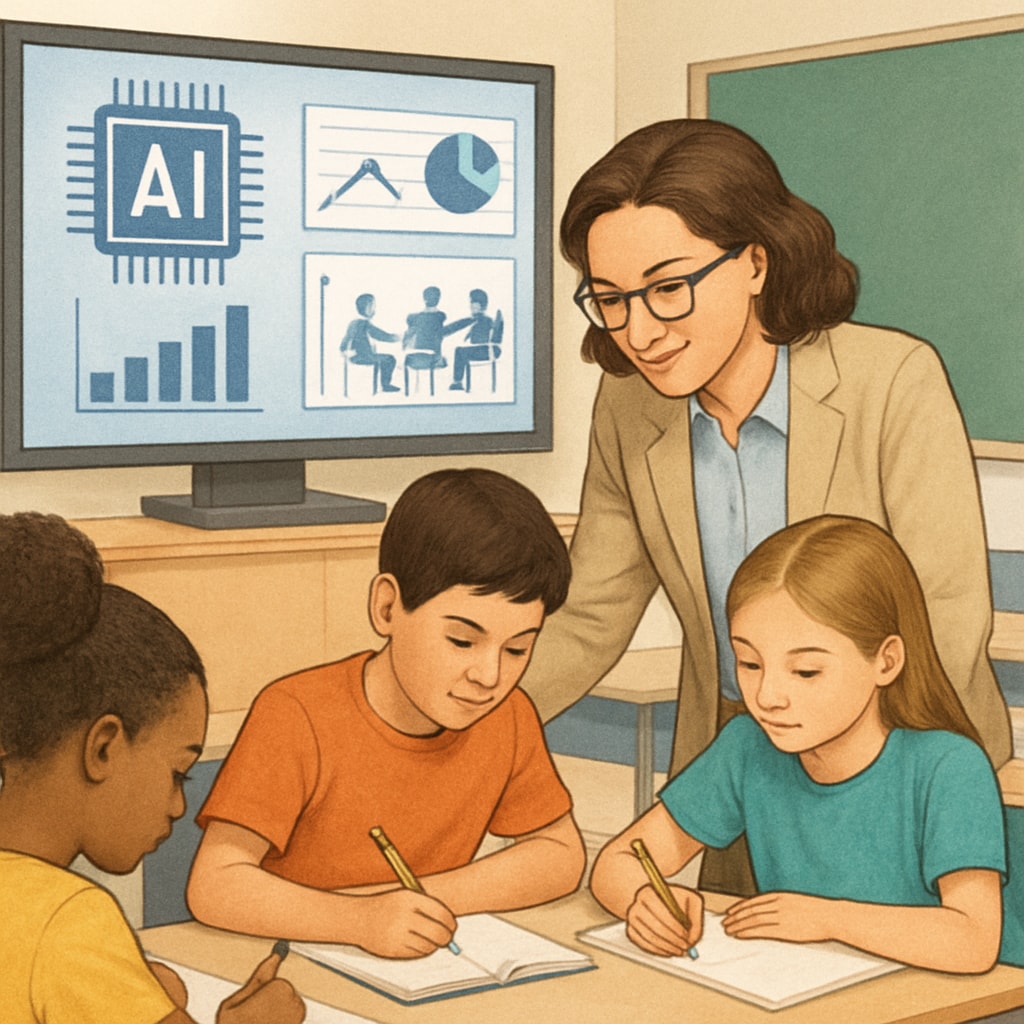Artificial intelligence is rapidly becoming a cornerstone of innovation across industries, and its impact on K12 education is poised to be revolutionary. By introducing personalized learning experiences, transforming the role of educators, and addressing disparities in resource distribution, AI has the potential to reshape traditional classrooms over the next 5–10 years. As educators and policymakers navigate this transformation, understanding the opportunities and challenges presented by AI is crucial.
Personalized Learning: Tailored Education for Every Student
One of the most significant ways artificial intelligence is influencing education is through personalized learning. AI-powered platforms can analyze students’ performance, learning styles, and areas of difficulty, tailoring lesson plans and resources to meet their unique needs. For example, tools like adaptive learning software provide real-time feedback, enabling students to progress at their own pace without being confined to a one-size-fits-all approach.
Moreover, AI can help identify gaps in students’ understanding, offering targeted interventions to address those areas. As a result, personalized learning not only enhances academic outcomes but also fosters confidence and engagement among students.

Redefining the Role of Educators
While AI enhances the learning experience for students, it also redefines the role of teachers. Instead of spending significant time on administrative tasks, educators can leverage AI tools to streamline grading, track student progress, and manage classroom logistics. This shift allows teachers to focus more on facilitating discussions, mentoring students, and fostering critical thinking skills.
However, the integration of AI also raises questions about the evolving responsibilities of educators. Teachers will need to embrace new technologies, adapt to hybrid teaching models, and develop their digital literacy to remain effective in this changing landscape.

Promoting Equity in Education Resources
Another promising aspect of artificial intelligence in K12 education is its ability to promote equity in resource distribution. AI can help bridge the gap between underfunded schools and their more affluent counterparts by providing access to high-quality digital tools and educational materials. For example, AI-driven platforms can translate content into multiple languages, making lessons accessible to non-native speakers and students in underserved communities.
In addition, AI can support students with disabilities by offering assistive technologies such as speech-to-text tools and customized learning interfaces. By addressing these inequalities, AI has the potential to create a more inclusive and equitable education system.
Challenges and Ethical Considerations
Despite its transformative potential, the adoption of artificial intelligence in schools is not without challenges. Privacy concerns, data security, and the risk of algorithmic bias are critical issues that demand attention. For instance, AI systems must ensure that student data is stored securely and used responsibly to avoid breaches or misuse.
Furthermore, the reliance on AI could exacerbate inequalities if access to technology remains uneven across regions. Policymakers and educators must work to ensure that the benefits of AI reach all students, regardless of their socioeconomic background.
Embracing the Future of Education
As artificial intelligence continues to advance, educators, administrators, and policymakers must proactively embrace its potential while addressing its challenges. By fostering collaboration between technology developers and educational institutions, the future of K12 education can be one that is both innovative and equitable.
In conclusion, AI’s impact on K12 education is transformative, offering unprecedented opportunities for personalized learning, redefining teaching roles, and promoting equity. While challenges remain, the proactive integration of AI into classrooms will pave the way for smarter, more inclusive learning environments in the coming decade.
Readability guidance: Short paragraphs and structured headings ensure clarity. Lists summarize key points, while transition words enhance flow. Images provide visual context and support textual content.


